WATERS OF LIFE
LIFE UNDERWATER
- VEGETATION
- PLANKTON
- BENTHOS
- FISH
- AMPHIBIANS AND REPTILES
- INTRODUCTION - AMPHIBIANS AND REPTILES
- BIODIVERSITY
- ENVIRONMENT AND ADAPTATIONS
- NUTRITION
- DISTRIBUTION
- RESEARCHER'S OPINION
AMPHIBIANS AND REPTILES - ENVIRONMENT AND ADAPTATIONS
![]() FLASH PLAYER IS REQUIRED TO SEE THE CONTENT OF THIS PAGE
FLASH PLAYER IS REQUIRED TO SEE THE CONTENT OF THIS PAGE

Northern Leopard Frog
During the breeding season, males defend a territory. Females choose their mate by the strength of his song. Each species has a distinctive song.

Northern Leopard Frog
Some leopard frogs have a brown color, while others, like in this photo appear greener.
VIDEO - 0 min 15 s
Frogs lay their eggs in the water. The eggs are attached to aquatic plants and form gelatinous masses.
This page contains videos that require Javascript and Adobe Flash Player to be activated. If you wish not to activate these functions, we offer pictures from the original videos.
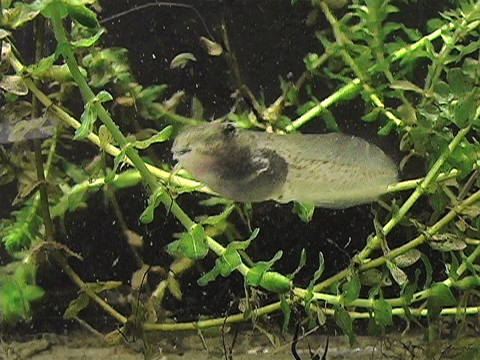
VIDEO - 0 min 24 s
As they grow, the tadpoles undergo metamorphosis. First the back legs appear, then the front legs.
This page contains videos that require Javascript and Adobe Flash Player to be activated. If you wish not to activate these functions, we offer pictures from the original videos.
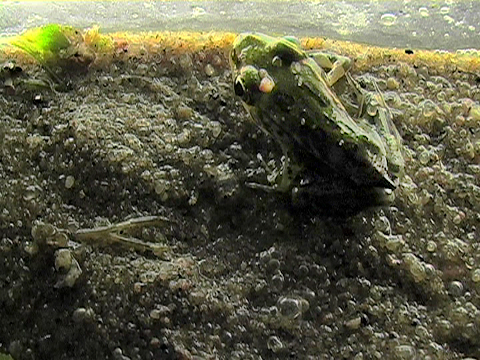
VIDEO - 0 min 10 s
The development period varies greatly between species, from a few weeks for the Northern Leopard Frog to two or three years for the Bullfrog.
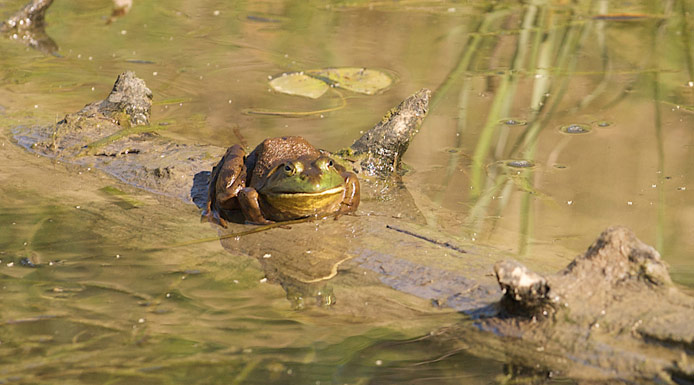
Bullfrog
Bullfrog tadpoles have a body the size of a hen’s egg. Like the adults, Bullfrog tadpoles are the largest in North America.
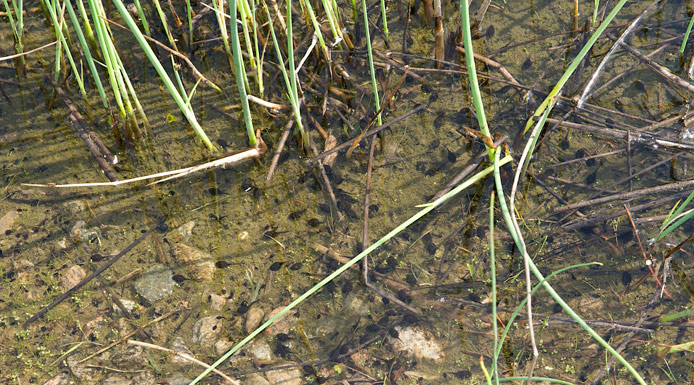
Many tadpoles in a pond
In their larval (tadpole) stage, frogs breathe through gills like a fish. They are thus exclusively aquatic.
This page contains videos that require Javascript and Adobe Flash Player to be activated. If you wish not to activate these functions, we offer pictures from the original videos.
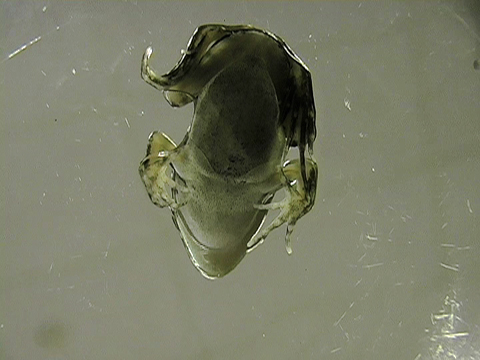
VIDEO - 0 min 15 s
Once they complete their metamorphosis, frogs can breathe either through their lungs or through their skin.
This page contains videos that require Javascript and Adobe Flash Player to be activated. If you wish not to activate these functions, we offer pictures from the original videos.
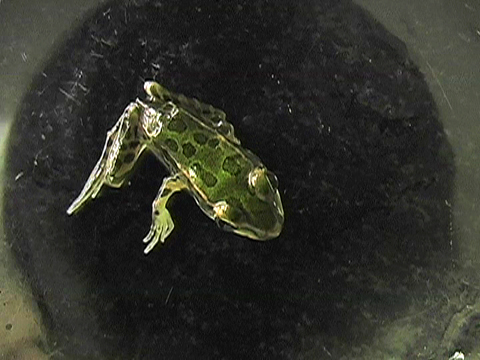
VIDEO - 0 min 10 s
The lungs of amphibians are used for breathing outside the water. Amphibians are also able to exchange gases through their skin, which is supplied with small blood vessels and mucus glands that maintain humidity.
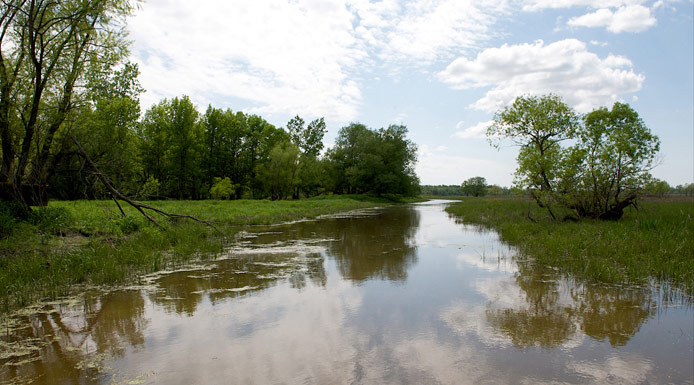
Because of this cutaneous mode of respiration, frogs are dependent on moist habitats. Their permeable skin also makes them more vulnerable to toxins, as their bodies absorb chemicals more rapidly.

Bullfrog
Since frogs are so sensitive to pollution, they are great indicators of environmental health.
LIFE UNDERWATER
AMPHIBIANS AND REPTILES
- INTRO AMPHIBIANS
- BIODIVERSITY
- ENVIRONMENT AND ADAPTATIONS
- NUTRITION
- DISTRIBUTION
- RESEARCHER'S OPINION
